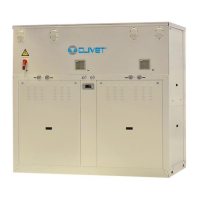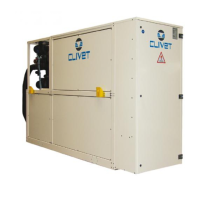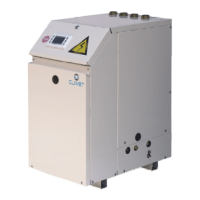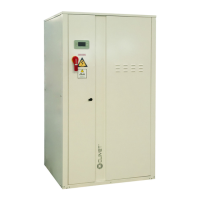Do you have a question about the CLIVET WSHN-XEE2 55.2 and is the answer not in the manual?
Provides correct unit installation, use, and maintenance instructions.
Details potential risks and hazards associated with unit operation and maintenance.
Covers outdoor installation requirements and considerations for system integration.
Instructions for immediate actions and consequences of unit failure.
Guidelines for manual storage and providing unit information for assistance.
Explains how to identify the unit using its serial number and data plate.
Safe procedures for lifting and moving the unit, including critical points.
Criteria for selecting an installation place and ensuring proper unit placement.
Specifications for acceptable water quality and potential issues from poor quality.
Measures to prevent freezing of water connections and the unit.
Procedures and precautions for making hydraulic connections to the unit.
Information on unit electrical data found on the serial number label.
Step-by-step guide for making electrical connections to the unit.
Instructions for connecting a PC for configuration and monitoring.
Overview of start-up procedures performed by qualified technicians.
Essential checks before powering up the unit, covering safety and installation.
Step-by-step process for unit start-up after installation.
Checks and operations related to the unit's refrigeration circuit.
Verification of ground connection, conductor tightening, voltage, and phase balance.
How to limit absorbed electric power using an external signal.
Function for automatic set-point regulation based on outside temperature.
Description of the unit's LED indicators and their meanings.
Explanation of the control panel display variables and their values.
Identification and function of the control panel keys.
Procedure for changing the unit's setpoint values for heating or cooling.
How to set operating events (On, Eco, Off) for each day of the week.
Procedures for identifying, resetting, and managing unit alarms.
Importance of maintenance by authorized centers for unit efficiency and lifespan.
Recommended inspection intervals and tasks for maintaining the unit.
Procedures for putting the unit into standby and preparing for re-start.
Diagrams showing different user-side hydronic unit configurations.
Diagrams illustrating various source-side hydronic assembly setups.
Details on the operation and settings of the 3-way modulating valve.
Explanation of the Natural Cooling function and its operational requirements.
Procedures for safely disconnecting the unit and recovering fluids.
Guidelines for dismantling and disposing of the unit according to standards.
Overview of common risks and safety precautions for electrical, mechanical, and refrigerant systems.
Provides correct unit installation, use, and maintenance instructions.
Details potential risks and hazards associated with unit operation and maintenance.
Covers outdoor installation requirements and considerations for system integration.
Instructions for immediate actions and consequences of unit failure.
Guidelines for manual storage and providing unit information for assistance.
Explains how to identify the unit using its serial number and data plate.
Safe procedures for lifting and moving the unit, including critical points.
Criteria for selecting an installation place and ensuring proper unit placement.
Specifications for acceptable water quality and potential issues from poor quality.
Measures to prevent freezing of water connections and the unit.
Procedures and precautions for making hydraulic connections to the unit.
Information on unit electrical data found on the serial number label.
Step-by-step guide for making electrical connections to the unit.
Instructions for connecting a PC for configuration and monitoring.
Overview of start-up procedures performed by qualified technicians.
Essential checks before powering up the unit, covering safety and installation.
Step-by-step process for unit start-up after installation.
Checks and operations related to the unit's refrigeration circuit.
Verification of ground connection, conductor tightening, voltage, and phase balance.
How to limit absorbed electric power using an external signal.
Function for automatic set-point regulation based on outside temperature.
Description of the unit's LED indicators and their meanings.
Explanation of the control panel display variables and their values.
Identification and function of the control panel keys.
Procedure for changing the unit's setpoint values for heating or cooling.
How to set operating events (On, Eco, Off) for each day of the week.
Procedures for identifying, resetting, and managing unit alarms.
Importance of maintenance by authorized centers for unit efficiency and lifespan.
Recommended inspection intervals and tasks for maintaining the unit.
Procedures for putting the unit into standby and preparing for re-start.
Diagrams showing different user-side hydronic unit configurations.
Diagrams illustrating various source-side hydronic assembly setups.
Details on the operation and settings of the 3-way modulating valve.
Explanation of the Natural Cooling function and its operational requirements.
Procedures for safely disconnecting the unit and recovering fluids.
Guidelines for dismantling and disposing of the unit according to standards.
Overview of common risks and safety precautions for electrical, mechanical, and refrigerant systems.











